 |
 |
 |
| |
Low-level viremia during ART and the risk
of death, AIDS, and serious non-AIDS events
|
| |
| |
"In conclusion, patients with LLV during cART were at increased risk of death. LLV 200-999 c/mL was associated with SNAE when compared to virologic suppression. Our study adds to mounting evidence that persistent LLV may be associated with increased risk of adverse events."
CROI 2020
Reported by Jules Levin
Olof Elvstam, Gaetano Marrone, Patrik Medstrand, Carl Johan Treutiger, Anders Sonnerborg, Magnus Gisslen, Per Bjorkman
http://www.croiwebcasts.org/console/player/44841?mediaType=slideVideo&
CROI 2020
Reported by Jules Levin
Olof Elvstam, Gaetano Marrone, Patrik Medstrand, Carl Johan Treutiger, Anders Sonnerborg, Magnus Gisslen, Per Bjorkman
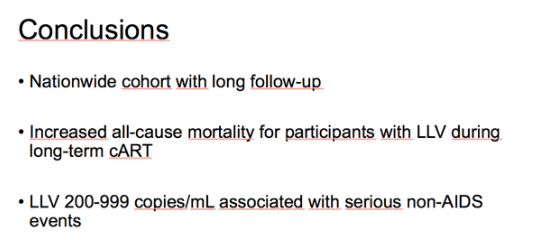
Abstract Body:
The impact of low-level viremia (LLV) during ART is unclear. We explored the associations between LLV and mortality, AIDS, and serious non-AIDS events (SNAE) using a population-based cohort.
All adults in the nationwide Swedish InfCare HIV register who started combination ART (cART) 1996-2017 were included if ≥2 viral load results (VL) were available ≥6 months after cART initiation. Participants were grouped into 3 categories: virologic suppression (<50 c/mL), LLV (50-999 c/mL), and high-level viremia (HLV, ≥1000 c/mL). Viremia was handled as a time-varying covariate; reclassification was only possible to a higher viremia stratum. In a separate analysis, LLV was divided into 2 subcategories: LLV 50-199 c/mL and 200-999 c/mL. Cox proportional-hazard models were fitted to determine the associations between viremia category and all-cause death, first AIDS condition, and first SNAE (cardiovascular disease, non-AIDS cancer, thromboembolism, pulmonary hypertension, renal and liver disease). The multivariable analysis included sex, age at start of cART, CD4 count and VL before ART, country of birth, injection drug use, exposure to mono and/or dual ART prior to cART, treatment interruptions, and an interaction term between viremia category and time.
In total, 6,956 participants were included, with a median follow-up of 5.7 years (49,986 person years). LLV occurred in 953 (14%) subjects; at the end of follow-up, 4,177 (60%) had virologic suppression, 339 (5%) had LLV 50-199 c/mL, 258 (4%) had LLV 200-999 c/mL, and 2,182 (31%) had HLV. LLV was associated with increased all-cause mortality compared to virological suppression, adjusted hazard ratio (aHR) 2.2 (95% confidence interval [CI] 1.3-3.6). When analyzed separately, LLV 50-199 c/mL had an aHR of 2.2 (95% CI 1.3-3.8) and LLV 200-999 c/mL of 2.1 (95% CI 0.95-4.7). All-cause mortality was also independently associated with higher age, male sex, lower CD4 counts, injection drug use, and treatment interruptions. Overall, LLV was not linked to increased risk of AIDS and SNAE, but in a subanalysis, LLV 200-999 c/mL was significantly associated with SNAE, aHR 2.1 (95% CI 1.2-3.8).
In conclusion, patients with LLV during cART were at increased risk of death. LLV 200-999 c/mL was associated with SNAE when compared to virologic suppression. Our study adds to mounting evidence that persistent LLV may be associated with increased risk of adverse events.
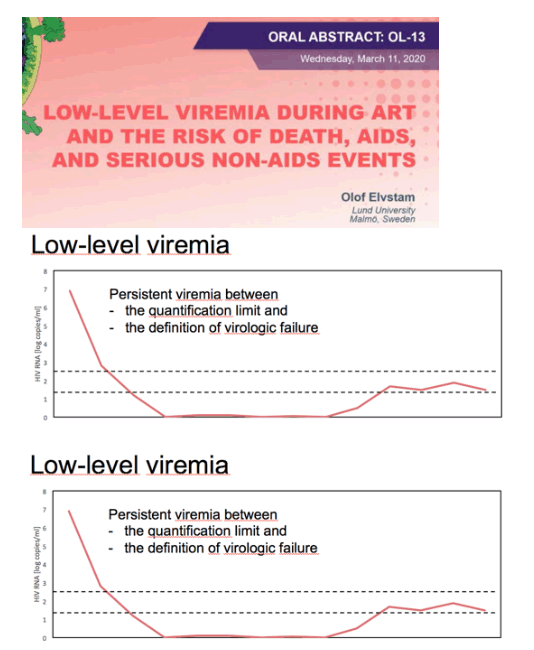
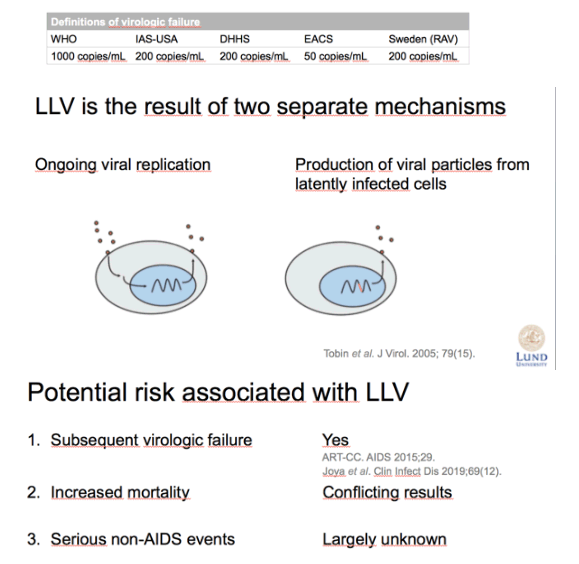
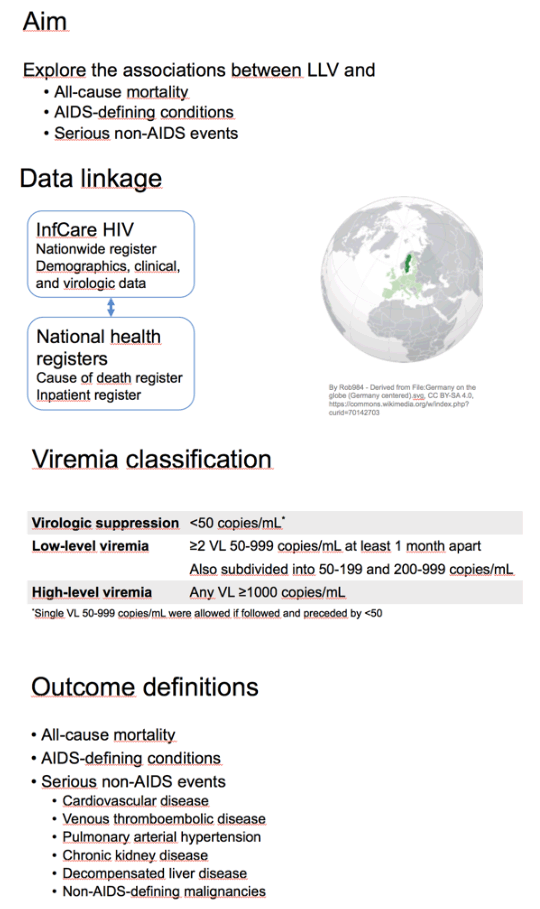
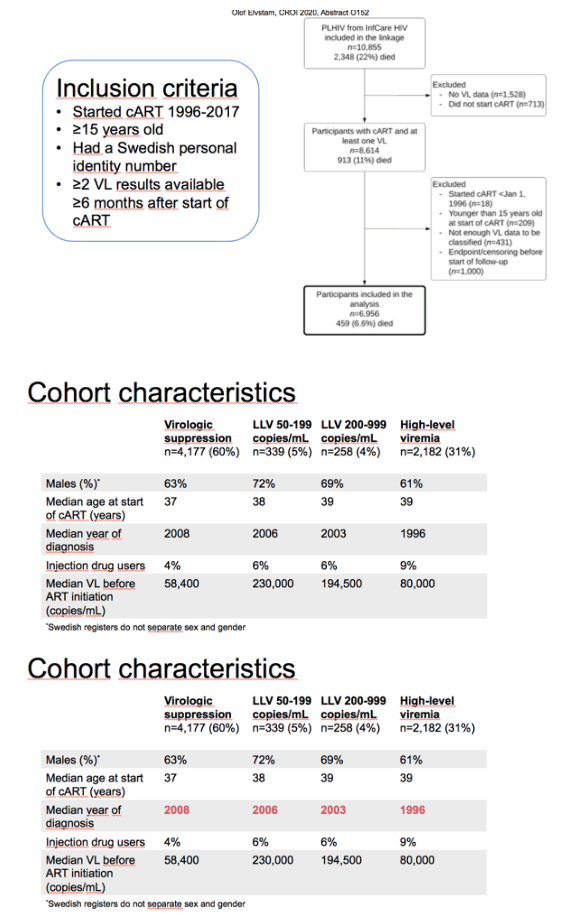
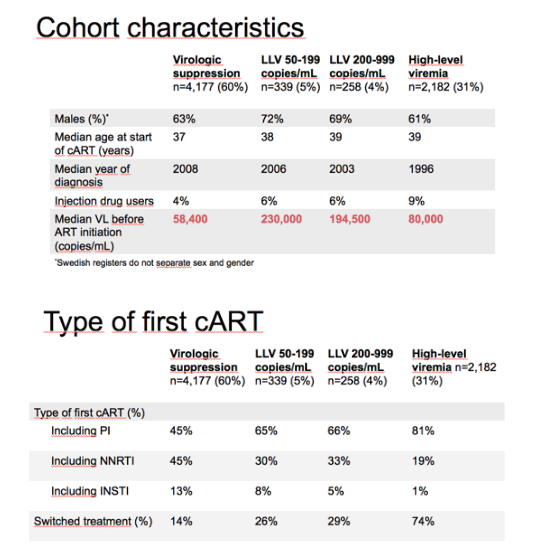

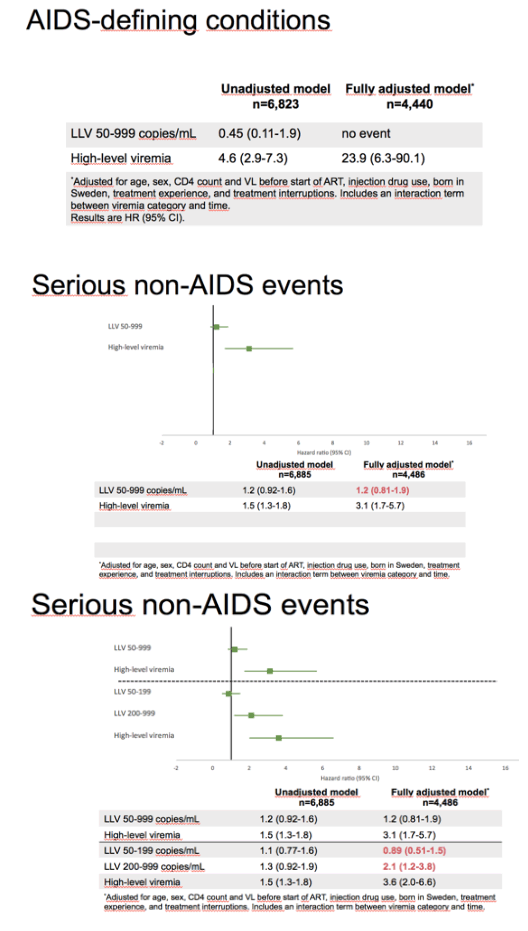
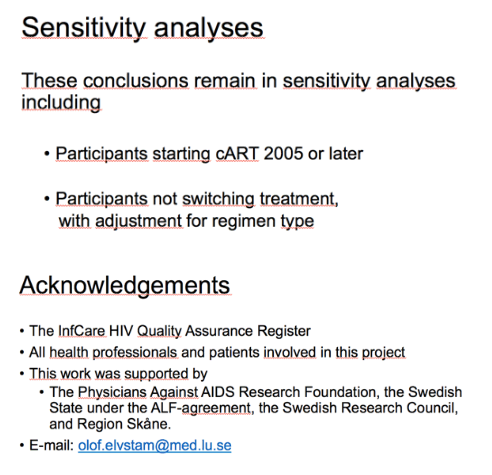
|
| |
|
 |
 |
|
|